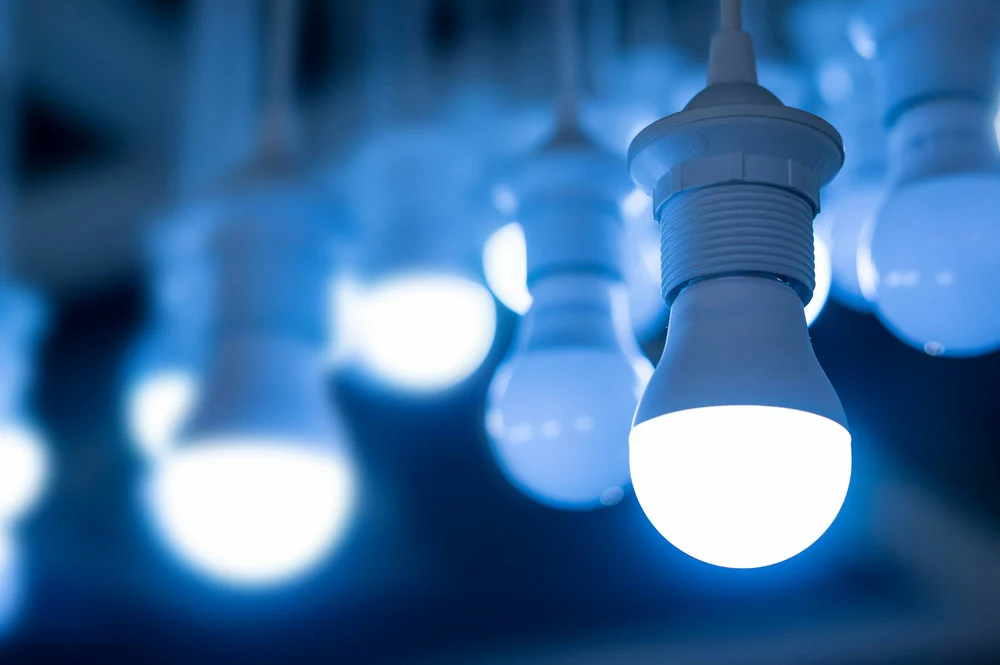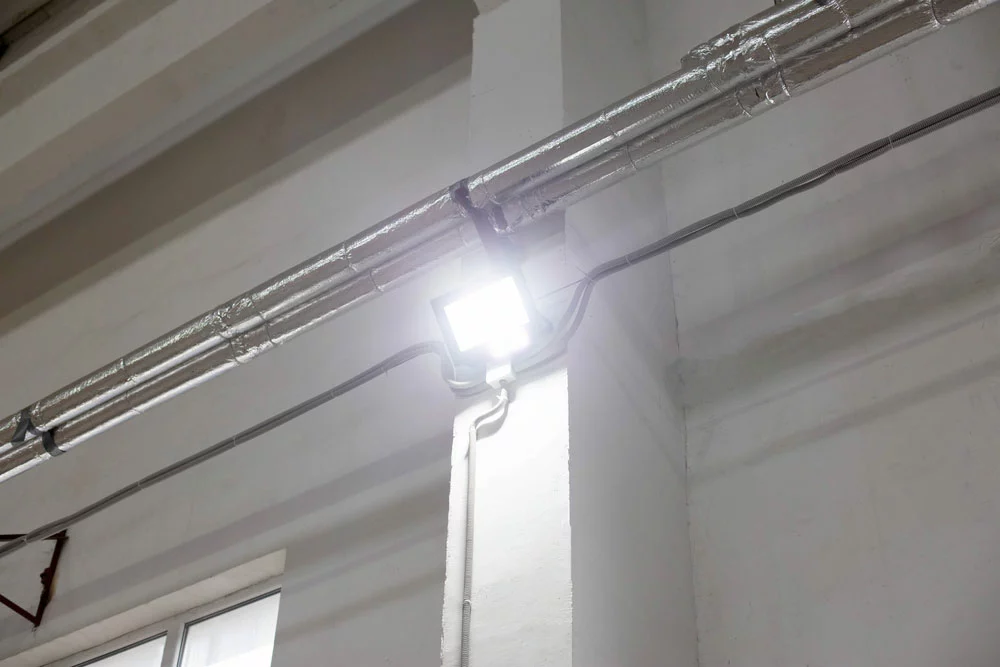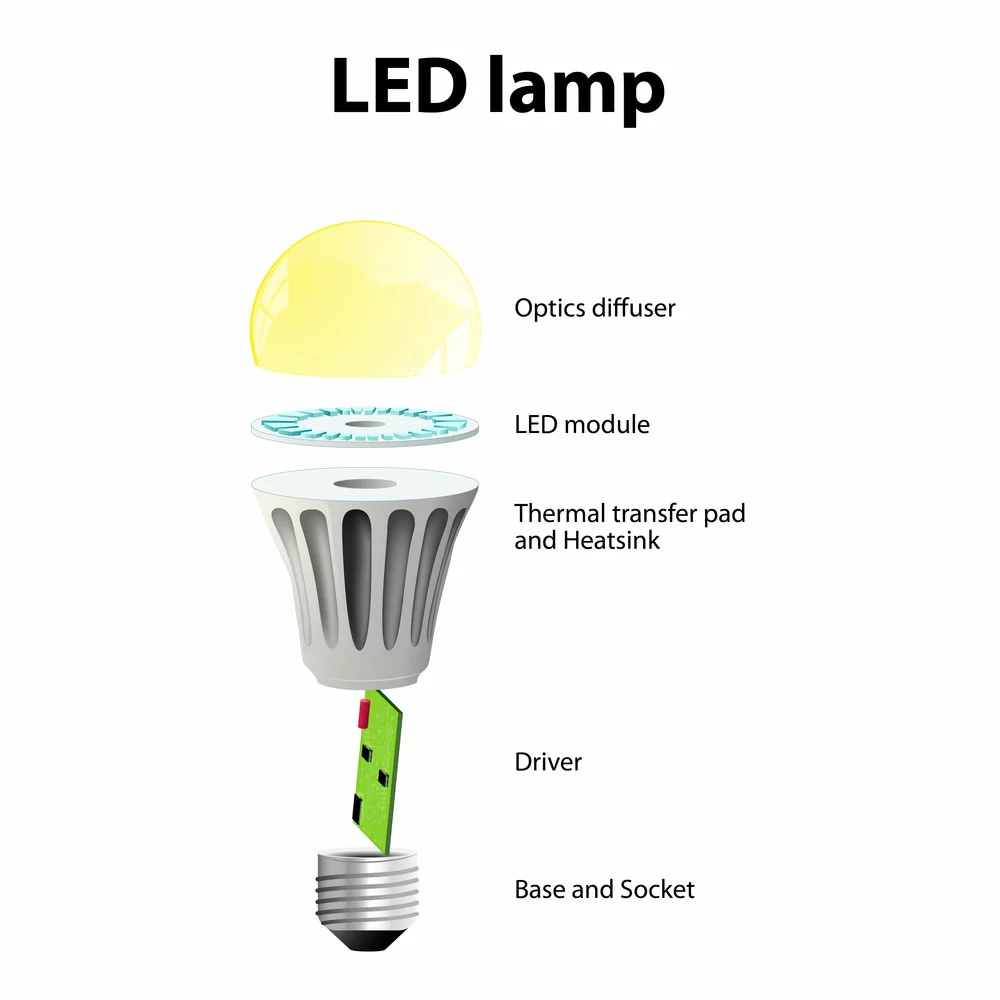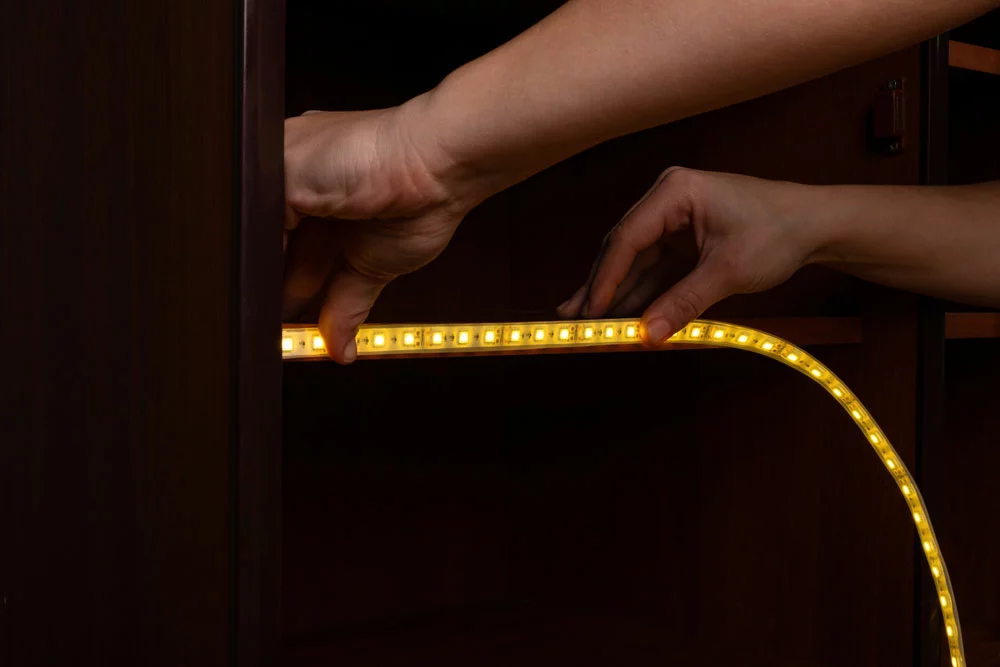Despite their efficiency, LED lights are still a light source. Especially recessed lights, LED strips, and GU10 lamps. Many people still believe that LED lights do not produce heat. The following guide aims to debunk this assumption and show you how to reduce heat from LED lights.
Do LEDs Get Hot?

LED Light Bulbs
While light-emitting diodes (LEDs) do not work like other light sources, such as bulbs, they still generate heat. While bulbs produce heat from the front, LEDs push heat out of the back. If you look at LED lamps or bulbs, you’ll notice that many have a heatsink structure on the back. On the other hand, LED tapes/strips spread heat evenly, and thus heat generation is less clear. LED lamps used in flood lights tend to generate the most heat.
Incandescent lights convert only 5% of the energy they feed into visible light, while the rest becomes heat. Conversely, LED lamps to convert 40% into visible light. Regardless, the heat generated from these lamps is far less than from incandescent lights.
Why Should You Worry About LED Lights Getting Hot?

LED Floodlights
Manufacturers typically quote maximum operating temperatures for LED lights and strips. This is usually an ambient temperature. Nevertheless, if the LEDs generate heat that exceeds the maximum operating temperatures, it may damage and fail the LEDs. If it does not fail, the LED’s efficiency will decrease over time, resulting in a shorter life span with noticeable dips in light output.
How To Reduce the Heat of LEDs?

Man holding light bulb that’s on fire
There are various ways you can reduce the heat of leads. However, this will depend on your installation or the type of LEDs.
How to Reduce Heat from LED Lights: Using Heat Dissipating Material
You can reduce the heat of strip or tape LEDs by placing them on a heat-dissipating area or surface. If the surface is uneven, you can use thermal paste or adhesive to ensure that there are as few gaps for air as possible. If you’re using LED tape or strips with adhesive, you can optimize heat dissipation by limiting the small gaps between the contact surfaces when you apply the LED tape. This will allow the LED tape to transfer heat more efficiently to your applied surface.
How to Reduce Heat from LED Lights: Using Heat Sinks
We commonly use heat sinks in PCBs, LED bulbs, or large LED floodlight installations. Of course, most LED installations feature a circuit board (such as a driver).

LED Lamp diagram
Nevertheless, heat sinks extract heat from the LED and PCB and push it out to the surrounding environment.
To avoid thermal build-up, the heatsink must dissipate heat faster than thermal transfer rates between the LED and PCB. Thus, the heat sink must use a material with high thermal conductivity. Gold, aluminum alloys, and copper are materials with high conductivity that manufacturers can use in heatsinks. However, some materials are more expensive than others. Nevertheless, you can create your own LED heatsink with the right tools and materials.
How to Reduce Heat from LED Lights: Using Active Cooling
Suppose you find that passive cooling is not working for your installments. Then you may consider adding some active cooling as a small fan or ventilation system. Alternatively, you can add a cooling gel or liquid cooling. However, in most cases, passive cooling should be enough. Therefore, before you add a fan or a liquid cooling system, you must follow basic LED installation protocols.
How to Reduce Heat from LED Lights: Best Practices to Reduce the Heat that LEDs Generate

LED Installation
First, you must check the manufacturer’s specifications. Once again, the manufacturer will provide you with the maximum operating temperature of the LEDs. You should ensure that the ambient temperature does not exceed this temperature.
This means checking the temperature of the rooms or areas you plan to use the LEDs. Furthermore, you must ensure that you are not feeding excessive energy to the LEDs. Thus, it would help if you also verified the power ratings before using the LEDs. Too much power running to the
LEDs could lead to excessive heat generation.
Secondly, avoid unventilated enclosed spaces. Avoid placing your LED lights in confined areas unless you can supply some cooling or ventilation. If you place your LEDs in a small tight space, it is bound to build heat up quicker.
In Summary
It would help if you never took the importance of proper LED thermal dissipation for granted. LEDs have many advantages over older light sources such as filament and fluorescent light bulbs. However, they are not perfect. As such, taking the necessary precautions when working with LEDs is essential. Regardless, in most cases, you must place the LEDs in well-ventilated areas and ensure that you use an efficient heatsink. These are the best ways to reduce heat from LED lights. If you have any LED-related questions, please don’t hesitate to contact us.
